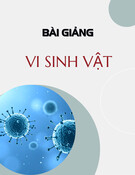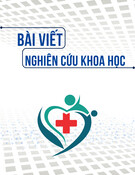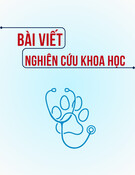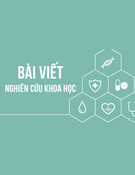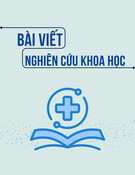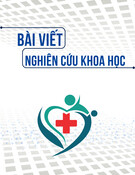
JOURNAL OF MILITARY PHARMACO-MEDICINE N04 - 2025
120
QUALITY OF LIFE AMONG ELDERLY PATIENTS WITH HEART
FAILURE AT THONG NHAT HOSPITAL IN 2023
Nguyen Thi Thao Suong1*, Le Dinh Thanh1, Nguyen Van Ba2
Nguyen Van Chuyen2, Tong Duc Minh2, Ta Quang Thanh3
Abstract
Objectives: To evaluate the quality of life (QoL) among elderly patients with
heart failure (HF) treated at Thong Nhat Hospital in 2023. Methods: A cross-
sectional descriptive study was conducted to assess the QoL of 300 elderly
inpatients (≥ 60 years old) diagnosed with HF from January 1, 2023 to December
31, 2023. Data were collected using the SF-36 and Kansas City Cardiomyopathy
Questionnaire (KCCQ) tools. Results: 55.33% of patients reported moderate-to-
poor overall health, with a mean physical health score of 23.51 ± 19.61 (62% poor,
27.33% moderate-to-poor). Mental health scores were comparatively higher,
averaging 57.84 ± 10.84, with 67.67% reporting moderate-to-good outcomes.
Marital status, education level, disease duration, and comorbidities (atrial
fibrillation) significantly influenced the maintenance of a good QoL. Conclusion:
Maintaining a good QoL among elderly HF patients was predominantly moderate-
to-poor, especially concerning physical health. Factors such as marital status,
educational attainment, duration of illness, and comorbidities were significant
determinants of maintaining a good QoL.
Keywords: Quality of life; Elderly; Heart failure.
INTRODUCTION
Maintaining a good QoL is critical
for patients with chronic progressive
illnesses, particularly HF. QoL in HF
patients is markedly reduced compared
to healthy individuals and those with
other chronic conditions [1]. QoL
reflects the impact of clinical symptoms
and treatment modalities on patients'
daily lives. HF symptoms such as dyspnea,
1Thong Nhat Hospital
2Vietnam Military Medical University
3Bac Thang Long Hospital
*Corresponding author: Nguyen Thi Thao Suong (thaosuongnguyen162@gmail.com)
Date received: 27/12/2024
Date accepted: 19/02/2025
http://doi.org/10.56535/jmpm.v50i4.1165

JOURNAL OF MILITARY PHARMACO-MEDICINE N04 - 2025
121
chest pain, fatigue, edema, and insomnia
often restrict physical and social activities,
leading to diminished QoL [2]. Poor
QoL is associated with increased
hospitalization and mortality rates [3].
QoL is also a sensitive measure for
evaluating intervention effectiveness
and an independent predictor of survival
in cardiovascular disease patients.
Therefore, comprehensive QoL assessments
are essential for tailoring appropriate
interventions for HF patients. However,
research on QoL among Vietnamese
HF patients, especially the elderly,
remains limited. This study aims to:
Address this gap by evaluating the QoL
of elderly HF patients at Thong Nhat
Hospital in Ho Chi Minh City in 2023.
MATERIALS AND METHODS
1. Subjects
Including 300 elderly patients (≥ 60
years) diagnosed with HF and admitted
to Thong Nhat Hospital from January 1,
2023 to December 31, 2023.
* Inclusion criteria: Inpatients
≥ 60 years old; diagnosed with HF;
voluntarily participated in the study.
* Exclusion criteria: Acute HF
diagnosis; declined participation.
2. Methods
* Study design: A cross-sectional
descriptive study.
* Sample size:
The sample size formula for the
descriptive study was used:
n =
Z2
1-a/2
x
(1-p)
x DE
p x ε2
n: Sample size; Z1-α/2: Confidence
coefficient with statistical significance
level α = 0.05, corresponding to 95%
confidence level then Z1- α/2 = 1.96;
DE (Design effect): Design coefficient,
choose DE = 2.0; p: Estimate the
percentage of elderly people with HF
receiving inpatient treatment at Thong
Nhat Hospital, choose p = 0.198
according to the study of Tran Song
Giang [4]; ε: Relative error, ε = 0.1.
The minimum sample size calculated
was n = 189; in fact, the study was
conducted on 300 elderly patients with
HF who were hospitalized at Thong
Nhat Hospital in 2023.
* Data collection tools:
SF-36: A widely used health-related
QoL scale consisting of 36 questions
evaluating physical health (physical
functioning, role limitations due to
physical health, pain), mental health
(vitality, social functioning, role limitations
due to emotional problems, mental
health), and overall health [4]. Scores
range from 0 to 100, with higher scores
indicating better QoL. The level of
assessment was defined as follows:

JOURNAL OF MILITARY PHARMACO-MEDICINE N04 - 2025
122
Poor (from 0 - 25); medium - poor (from
26 - 50); medium - good (from 51 - 75);
good - very good (from 76 - 100).
KCCQ: A 15-item questionnaire
assessing physical and psychological
health, social relationships, and living
environment. Scores are standardized
from 0 (poorest) to 100 (best) [5].
* Data analysis: Data were entered
and analyzed using SPSS 22.0.
3. Ethics
The research was conducted according
to Decision No. 196/QĐ-BKHCN dated
February 2, 2021, issued by the
Ministry of Science and Technology.
Thong Nhat Hospital granted
permission for the use and publication
of the research data. The authors hereby
declare that there are no conflicts of
interest in this research.
RESULTS
Table 1. Demographic and clinical characteristics of elderly HF patients
(n = 300).
General characteristics
Mean
Age (X
± SD)
75.95 ± 9.33
Gender, n (%)
Female
138 (46.0%)
Male
162 (54.0%)
Marital status, n (%)
Currently married
198 (66.0%)
Single/widowed
102 (34.0%)
Duration of illness (X
± SD) (month)
70.08 ± 127.65
Educational attainment
n (%)
High school or above
97 (32.33%)
Below high school
203 (67.67%)
NYHA HF
classification, n (%)
I
92 (30.67%)
II
49 (16.33%)
III
128 (42.67%)
IV
31 (10.33%)
Atrial fibrillation
n (%)
Yes
108 (36.0%)
No
192 (64.0%)
(NYHA: New York Heart Association)
The mean age of the study population was 75.95 ± 9.33 years, with a female-to-
male ratio of approximately 1:1.17. The mean duration of illness was 70.08 ±

JOURNAL OF MILITARY PHARMACO-MEDICINE N04 - 2025
123
127.65 months. Among the 300 patients, the proportions of the New York Heart
Association (NYHA) class I, II, III, and IV were 30.67%, 16.33%, 42.67%, and
10.33%, respectively. Atrial fibrillation was observed in 36% of HF patients.
Table 2. Mean QoL scores (SF-36) of elderly patients with HF.
Domains
± SD Min
Max
Physical health
23.51 ± 19.61
0.0
74.05
Mental health
57.84 ± 10.84
29.29
78.57
Overall health
36.90 ± 14.60
17.36
75.28
The mean physical health score of chronic HF patients was 23.51 ± 19.61 points,
ranging from 0 - 74.05 points. For mental health, the mean score was 57.84 ±
10.84 points, ranging from 29.29 to 78.57 points. The mean overall health score of
the study population, calculated based on physical and mental health scores, was
36.90 ± 14.60 points.
Figure 1. Classification of QoL scores among elderly patients with HF.
Regarding physical health scores, the majority of patients in the study had poor
scores (62%) and moderate-to-poor scores (27.33%). None of the patients achieved
scores classified as good or very good in physical health. Mental health scores

JOURNAL OF MILITARY PHARMACO-MEDICINE N04 - 2025
124
were higher; specifically, no patients were classified as having poor mental health
scores. The proportions of patients with moderate-to-poor, moderate-to-good, and
good-to-very-good mental health scores were 22.67%, 67.67%, and 9.67%,
respectively. As for overall health scores, 55.33% of patients were in the moderate-
to-poor category, 22% in the moderate-to-good category, and 21% were classified
as poor.
Table 3. The correlation between mean QoL scores (SF-36)
and demographic characteristics of elderly patients with HF (n = 300).
Variables
Physical health
Mental health
Overall health
± SD
p
± SD
p
± SD
p
Gender
Male (162)
22.37 ± 18.62
> 0.05
57.28 ± 10.51
> 0.05
36.00 ± 14.07
> 0.05
Female (138)
24.86 ± 20.70
58.50 ± 11.22
37.95 ± 15.19
Age
60
-
69 (86)
21.08 ± 18.45
> 0.05
57.93 ± 9.98
> 0.05
35.44 ± 13.92
> 0.05
70
-
79 (92)
23.80 ± 19.89
57.80 ± 11.87
37.07 ± 14.99
≥ 80 (122)
25.02 ± 20.19
57.81 ± 10.70
37.80 ± 14.81
Marital
status
Currently
married (198)
30.80 ± 19.63
< 0.05
59.02 ± 11.92
< 0.05
41.82 ± 15.06
< 0.05
Single/widowed
(102)
9.37 ± 9.01
55.56 ± 7.93
27.35 ± 7.02
Educational
attainment
High school or
above (197)
29.08 ± 18.63
< 0.05
58.54 ± 10.48
> 0.05
40.64 ± 14.30
< 0.05
Below high
school (203)
20.85 ± 19.56
57.51 ± 11.02
35.11 ± 14.44
The physical health and overall health scores of elderly HF patients living with
a spouse and having an educational attainment of high school or above were
significantly higher compared to those who were single/widowed and had an
educational attainment below high school (p < 0.05). Regarding mental health
scores, HF patients living with a spouse also exhibited significantly higher QoL
scores compared to single/widowed patients (p < 0.05).

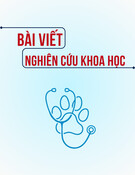
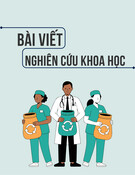
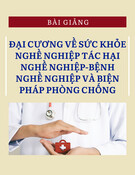



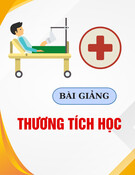



![Tài liệu Triệu chứng học nội khoa [mới nhất]](https://cdn.tailieu.vn/images/document/thumbnail/2025/20251204/oanhlahet@gmail.com/135x160/5231764900514.jpg)
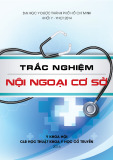
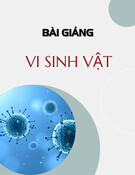
![Bài giảng Vi sinh vật: Đại cương về miễn dịch và ứng dụng [chuẩn nhất]](https://cdn.tailieu.vn/images/document/thumbnail/2025/20251124/royalnguyen223@gmail.com/135x160/49791764038504.jpg)
